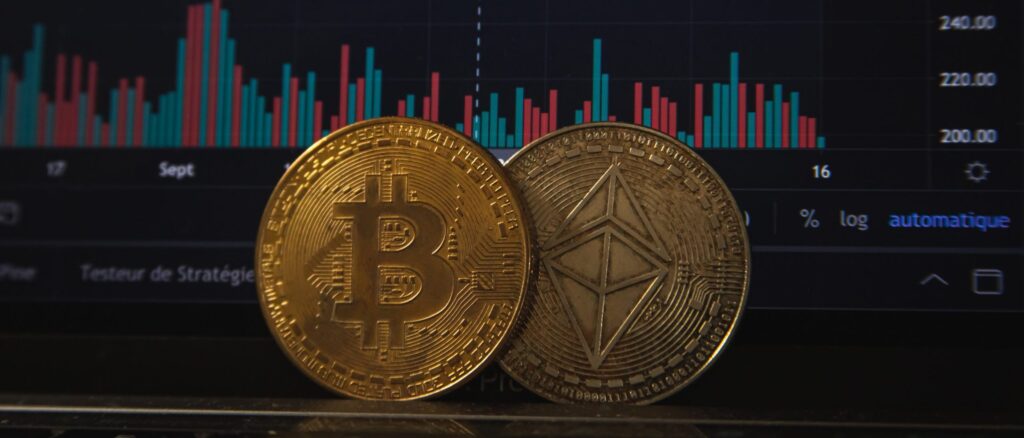First of all, this article is going to be a bit different from the usual posts we share here at the Canecom blog as it is a much more personal write up that is meant to somewhat summarize my own personal journey from starting as a complete naysayer to becoming an absolute fan of blockchains and the underlying technology.
Secondly, this is going to be a fairly long article starting from the broad and general and slowly galloping towards some of the detailed specifics so if you feel that you are already familiar with the basics you may skip the first 3 parts. Grab some coffee or tea and saddle up as it is going to be worth your while I promise.
Intro
As many of us, I was skeptical or even ignorant at first as it just seemed like yet another new buzzword that gets overhyped in the media. I studied as a software engineer so the basic concept didn’t really seem that revolutionary to me at first. After a 1 minute YouTube search, my understanding was that it is some sort of a clever “array” that stores transactions more securely than before and I immediately dropped the topic at that. Only recently when I started to dive into fintech more and more deeply (no, I still don’t own any crypto) is when I started to realize that there might be more to it. I admit that seeing some of the CryptoPunks NFTs or Snoop Dogg’s Diamond Joint NFTs going for as high as a whopping 500 million dollars a piece didn’t help the credibility of the system in my case.
It was only when I discovered some of the real world use cases that aren’t closely connected to Bitcoin or digital art when the topic really started to tickle my fancy and I felt that I had to give it a second shot.
So, what is a Blockchain anyways?
Before quickly rushing into the new and most exciting ways of how blockchains evolve almost every minute and their immense future potential, let’s quickly recap what a blockchain really is to have a shared foundation we can build on.
I find that the definition that IBM uses is probably the best place to start:
“Blockchain is a shared, immutable ledger that facilitates the process of recording transactions and tracking assets in a business network. An asset can be tangible (a house, car, cash, land) or intangible (intellectual property, patents, copyrights, branding). Virtually anything of value can be tracked and traded on a blockchain network, reducing risk and cutting costs for all involved.”
Okay, so the two main takeaways here are that it is a shared ledger and that it is meant to be immutable so in theory it can’t be altered.
This brings some really great advantages:
- It is immediate, shared and completely transparent.
- It (can be set) to be accessed only by permissioned network members which makes it ideal for tasks like tracking orders, payments, accounts, production and much more.
- Members share a single view of the truth so everybody can see all details of a transaction end to end, giving a great sense of confidence.
Okay, but why is it special?
Great! However, one would assume that this is the end goal for most types of ledgers, to be completely secure but still easy to be referenced. This brought up the question for me, why is blockchain different then, what is so revolutionary about it? In order to answer this, I had to understand how it works exactly. It turns out that the idea is not exactly brand new, it was born in 1991 when a group researchers were looking for a way to timestamp digital documents in order to prevent them from backdating.
- Each transaction is recorded as a “block” of data. This can store any information: who, what, when, where, how much and even conditions like the temperature of a food shipment for example.
- Each block stores 3 main parts: some Data, the Hash of the given block and the Hash of the previous block.
- The hash is like a fingerprint, it is unique and can be easily used to identify a block and its content. This hash is calculated when the block is being created and if something changes within the block, the hash is also going to change. This makes them perfect for detecting changes in the blocks.
- The chain of the blocks is created by storing the hash of the previous block which makes the system really secure. The only exception is the first block as it can’t point to any previous blocks so it is called the “genesis block”.
- If anyone tampers with a block, its hash is also going to change so the next block that points back to it will no longer have a valid previous block hash. This will make all following blocks invalid.
Yes. BUT hashes are used everywhere and modern computers can calculate millions of hashes in a split second so you could in theory recalculate all the hashes and make your entire blockchain valid again without anyone noticing.
That is why blockchains have an added mechanism called Proof-of-Work. In essence, the Proof-of-Work slows down the creation of new blocks. For example in the case of Bitcoin, it takes approximately 10 minutes to calculate the required PoW and add a new block to the chain. This makes it much more difficult to alter any block as it would mean you need to recalculate all the following PoW as well.
We are almost there but there is still one more important added layer. Blockchains are distributed so they use a Peer-to-Peer network in which everyone has a copy of the full blockchain. These so-called “nodes” can verify new blocks and check them against their records. The really important part is that these nodes create a consensus, so they agree on which blocks are valid and which aren’t.
The security comes from the clever combination of hashes, proof-of-work and the distributed network as if you would want to tamper with a block, you would not only need to recalculate all the following hashes and the PoW for all the following blocks but you would also need to take control of more than 50% of the PtoP network in order to make the other nodes accept your tampered block. This makes blockchains so brilliant as it is almost impossible to do all this in one go.

Bitcoin vs Ethereum
Going in depth on the topic of cryptocurrencies is really not the scope of this article and I definitely want to stay away from influencing anyone in making any related decisions (investing in crypto coins or tokens is highly speculative, I warned you!) but I think it is important to look into the differences between the Bitcoin blockchain and the Ethereum blockchain in order to understand the evolution of the technology better.
Bitcoin is widely viewed as “the original crypto”, founded in 2009 by a programmer (or, possibly, a group of programmers) under the pseudonym Satoshi Nakamoto and it can also be credited for making the concept of blockchain become known worldwide. This is proved by the fact that the original and largest blockchain is still the one that orchestrates the Bitcoin transactions today.
To quote the ICAEW – Institute Of Chartered Accountants In England And Wales:
“Posting their seminal whitepaper in 2008 and launching the initial code in 2009, Nakamoto created bitcoin to be a form of cash that could be sent peer-to-peer without the need for a central bank or other authority to operate and maintain the ledger, much as how physical cash can be.While it wasn’t the first online currency to be proposed, the bitcoin proposal solved several problems in the field and has been by far the most successful version.”
In comparison, Ethereum is a far more recent development, it went live in 2015 and in the time between Bitcoin and Ethereum’s release, lots of other new cryptocurrencies were created. There are literally over a 1000 of them today. However, they were mostly limited to trying to improve certain aspects of Bitcoin’s performance, like increasing the speed of transactions or improving the security or anonymity of the transactions.
Ethereum is also certainly faster than Bitcoin, transactions typically settle in seconds instead of minutes but it takes the whole idea a step further. While it still operates as a store of value, it can also be viewed as a platform for distributed computing, which comes with its own built-in currency, called Ether.
The Bitcoin blockchain can be pictured as a database of accounts or wallets each storing an amount of currency. In comparison, the Ethereum network blockchain is more sophisticated in its construction and it is capable of storing various computer code (called applications) that can use the CPU power going into the network to execute.
Ether essentially represents this CPU power so the clever idea is that the currency will be bought and sold by businesses, governments, private entities..etc. to allow them to utilize the vast, distributed resources of the Ethereum network to run their own apps.
This all sounds too good to be true!
So far, it all sounded like a fairy tale. Better, more secure, it is built on a community, it is multipurpose, transparent and I could go on but we all know that it is not all unicorns and rainbows and usually such advantages have to have some drawbacks too.
To cut right to the chase, the most important and most obvious disadvantage is the energy consumption of running such blockchains. New York Times has a recent publication on this very topic which has some mind blowing data that helps to put things into perspective:
- Bitcoin mining consumes approx. 91 terawatt-hours of electricity annually.
- That’s more than the annual electricity use of Finland! That is a 5.5 million people country!
- It is a 10x jump from 5 years ago and almost 0.5% of the entire electricity consumption of planet Earth.
- And it’s more than 7x times the electricity used by all of Google’s global operations.
According to the same New York Times article, a single desktop computer could easily mine bitcoin back in 2011, when the cryptocurrency had little following. Now, it takes roughly “13 years of typical household electricity” to mine a single bitcoin and with the recent appreciation in prices and interest we can see that it will only get worse in the next few years.
It is easy to see that this isn’t all that really great for the environment and climate change but there are some more connecting factors that we also need to take into account.
- Scalability of the system: To put it simply, the larger a blockchain grows, the more vulnerable it gets. Furthermore, every device in your network must have a copy of every transaction made. This inbuilt redundancy of the blockchains makes them even harder to scale and I don’t even need to mention again that this all requires an immense amount of power to run.
- Regulation, or the lack of: No moderators, no leaders, not even a regulatory body! The decentralized approach means there’s no one to enforce rules and order in the network. Moreover, as every user can be from a different country, the blockchain goes beyond every border, it is not easy to define which laws you should apply so it is not surprising that countries like China and Korea are likely to ban cryptos.
- Transparency (too much): there are constant discussions over the integration of blockchain technology in supply chains. It looks like a brilliant idea on paper but a public blockchain (the most prevalent form) in a commercial environment isn’t always a good idea. Why? Because if a supply chain becomes transparent, so will the data of all the customers and partners dealing with that business.
- Security: this might seem counterintuitive as security is one of the main advantages of the blockchain but as they say, the chain is only as strong as its weakest link. As an easy example, if someone wanted access to data shared within an exclusive blockchain, they only need access to one node in it meaning the device that is the easiest to hack in a blockchain is a threat to the privacy of the entire blockchain.
Luckily, blockchain is a field that is rapidly evolving and growing and there are potential good solutions to every point mentioned above.

How Ethereum 2.0 improves the situation?
Ethereum 2.0, also known as “Serenity” or Eth2 is an upgrade to the Ethereum blockchain. It aims to enhance the speed, efficiency, and scalability of the Ethereum network so that it can process more transactions and ease bottlenecks.
The main highlight is that Ethereum 1.0 uses the already discussed proof-of-work (PoW) consensus mechanism which Ethereum 2.0 will switch to a proof-of-stake (PoS) mechanism. The main advantage of PoS is that it is far more energy-efficient than PoW, as it decouples energy-intensive computer processing from the consensus algorithm. It also means that you need far less computing power to secure the blockchain.
- PoW: miners use the processing power of their machines to solve complex mathematical puzzles and verify new transactions. The first miner to solve a puzzle adds a new transaction to the record of all transactions that make up the blockchain. They are then rewarded with the network’s native cryptocurrency. However, this process can be hugely energy-intensive.
- PoS: proof of stake differs in that instead of miners, users can stake a network’s native cryptocurrency and become validators. Validators verify transactions, ensure the network isn’t processing fraudulent transactions and are selected to propose a block based on how much crypto they have staked, and how long they’ve staked it for.
Other validators also attest that they have seen a block and when there are enough attestations, a block can be added to the blockchain.
Validators are rewarded for the successful block proposition at the end. This process is known as “forging” or “minting.”
Ethereum 2.0 promises up to 100,000 transactions per second compared to the 30 transactions per second limit of Ethereum 1.0. This increase will be achieved through the implementation of shard chains. The current Ethereum setup has a blockchain consisting of a single chain with consecutive blocks which causes congestion and delays so with the introduction of shard chains, this blockchain will be split up to 64 shards in Phase 2. This is going to enable parallel chains instead of consecutive ones which will not only speed up the network but it will make it much easier to scale. Ethereum 2.0 will also require a minimum of 16,384 validators, making it much more decentralized and secure.
If you navigate to the ETH2 upgrade page, you can see that this is going to happen in multiple stages over the course of a few years. Rollout stages:
- The Beacon Chain: introduces proof-of-stake and lays the groundwork – this is already live
- The merge: the Mainnet Ethereum “merges” with the Beacon Chain which will enable staking for the entire network and signal the end of energy-intensive mining – 2022 Q1/Q2
- Shard chains: going to expand Ethereum’s capacity to process transactions and store data. These shards themselves will gain more features over time, also rolled out in multiple phases – later in 2022
I personally have big hopes for Eth2 and I am really glad to see that some of the best consultants and minds in the business are involved in this transition.
The idea of Hybrid Smart Contracts
Let me directly quote the relevant Ethereum article here:
“A “smart contract” is simply a program that runs on the (Ethereum) blockchain. It’s a collection of code (its functions) and data (its state) that resides at a specific address on the Ethereum blockchain. Smart contracts are a type of Ethereum account. This means they have a balance and they can send transactions over the network. However they’re not controlled by a user, instead they are deployed to the network and run as programmed. User accounts can then interact with a smart contract by submitting transactions that execute a function defined on the smart contract. Smart contracts can define rules, like a regular contract, and automatically enforce them via the code. Smart contracts cannot be deleted by default, and interactions with them are irreversible.”
This might sound a bit dry but in essence this is a new and SMART way of automating contracts and agreements enabling them to automatically execute when consensus says that conditions have been filled. Simple in concept but their potential uses are endless, such as enabling payment systems which will release funds on completion of work, or authorising the transfer of ownership of a good when the relevant payment has been made.
However, as we learned, the underlying blockchains run on isolated networks so they have no default built-in connection to the outside world. Without this external connectivity, smart contracts cannot communicate with the outside world to confirm if a real-world event really happened. Similarly to a computer without Internet access, smart contracts are also limited so the next step is programmable smart contracts that connect with real-world data and traditional systems outside a blockchain in order to expand the inputs and outputs that can be used within smart contract logic. These hybrid smart contracts use a secure middleware known as an oracle to combine on-chain code with off-chain infrastructure, leading to superior digital agreements based on cryptographic truth across more industries and use cases.
If I made you interested, I would recommend reading this article from Chainlink.
Decentralized finance (DeFi)
The global economy today operates on systems that entrust large capital on centralized financial institutions. This not only makes it difficult for new users to access and participate in financial markets but also limits the developers ability to easily create new financial products. This is not a really healthy and nurturing landscape, the barrier of entry is high, important code is running on legacy large monolithic systems creating risks for all participants.
On the other hand, there is a strong open-source movement and the public blockchain infrastructure creates an opportunity where anyone with an Internet connection can access a global, decentralized, and peer-to-peer financial system eliminating the need of trusting a middleman with our highly valuable assets. This is called Decentralized finance, or “DeFi”, a blockchain-based ecosystem of permissionless and transparent financial services and it might be one of the most significant advancements enabled by blockchains, smart contracts, and oracles.
DeFi enables users to access a really similar financial application stack as they would in traditional finance but without requiring the involvement of any centralized intermediary. Since the code powering DeFi apps is available for anyone to audit, it provides a much greater confidence in the financial agreements and that they execute exactly as intended.
Rights Management (Tokens)
In the digital world so many copyrighted works are pirated because they are dead simple to copy. It is enough to right click and “Save as” or visit a Torrent site and hit Download. As a result, it is impossible for any single authority to ensure that the creators’ businesses don’t face any losses. A blockchain-based Digital Rights Management can be a high-level and credible solution for content protection and conditional traceability of violation.
Blockchain based token smart contracts are used to create, track, and assign ownership rights to specific digital tokens existing on the networks. This contract can code functionalities into the tokens it issues and provide users features like:
- utility/insurance in a dApp (utility token)
- voting weight in a protocol (governance token)
- equity in a company (security token)
- ownership claim to a unique real-world or digital asset (non-fungible token)
For example, the FIL token is used to pay for Filecoin’s decentralized storage services and the COMP token allows users to participate in the governance of Compound protocol.

Gaming and NFTs
One of the most well known gaming companies, Electronic Arts (EA) has told its investors that collectible NFTs are “an important part of the future of our industry”. When reporting to investors, Chief executive Andrew Wilson highlighted Fifa as an example. The football game series already uses “card packs” to “collect” players in its Ultimate Team mode but players “want more digital experiences outside the game – esports, NFTs, broader sports consumption and they want us to move really, really quickly”. This is somewhat proven by the fact that for example French firm Sorare, selling football trading cards in the form of non-fungible tokens (NFTs), recently raised $680m (£498m).
NFT is the acronym for non-fungible token which in short means that it is unique and can’t be replaced. For example a dollar is fungible, trade one for another dollar, and you’ll have exactly the same thing. On the other hand, the Mona Lisa is non-fungible, there is only one and it couldn’t be replaced. NFTs can be almost anything digital (paintings, music, your brain scan..etc.) but most of the current excitement is around using the tech for trading digital art.
If you would like to see some ridiculous examples, I would recommend checking this Verge article.
We know that it is not only art collectors, gamers also love collecting things and NFTs make this possible. In the good old days, you could collect Pokémon cards and even if the original producer decided to shut down the entire series, you could still keep them and hold onto their value or make a bit of profit when selling them later down the road. Fully digital games did not offer this same experience up until now but imagine if you could buy a really special weapon or shield and keep it as an NFT.
Play-to-earn is the new and emerging paradigm. It is based on creating real-world value out of in-game items and other forms of digital goods using NFTs, crypto and other blockchain related technologies. This could help in forming the foundation of the ever sought-after metaverse that so many firms are now desire to create. Mr. Zuckerberg even thinks that even the market for virtual clothing in the metaverse could become a billion-dollar idea.
The NFT gaming boom is coming and I think it is inevitable. The real question now is how big can the market grow without the big platform support companies like Apple, Google or Valve.
Closing
If you made it this far, BRAVO! You are really a hero and I really want to hear your opinion, your bravest ideas and the most ridiculous things you heard in relation to blockchain so please, drop me an email and start a discussion.


